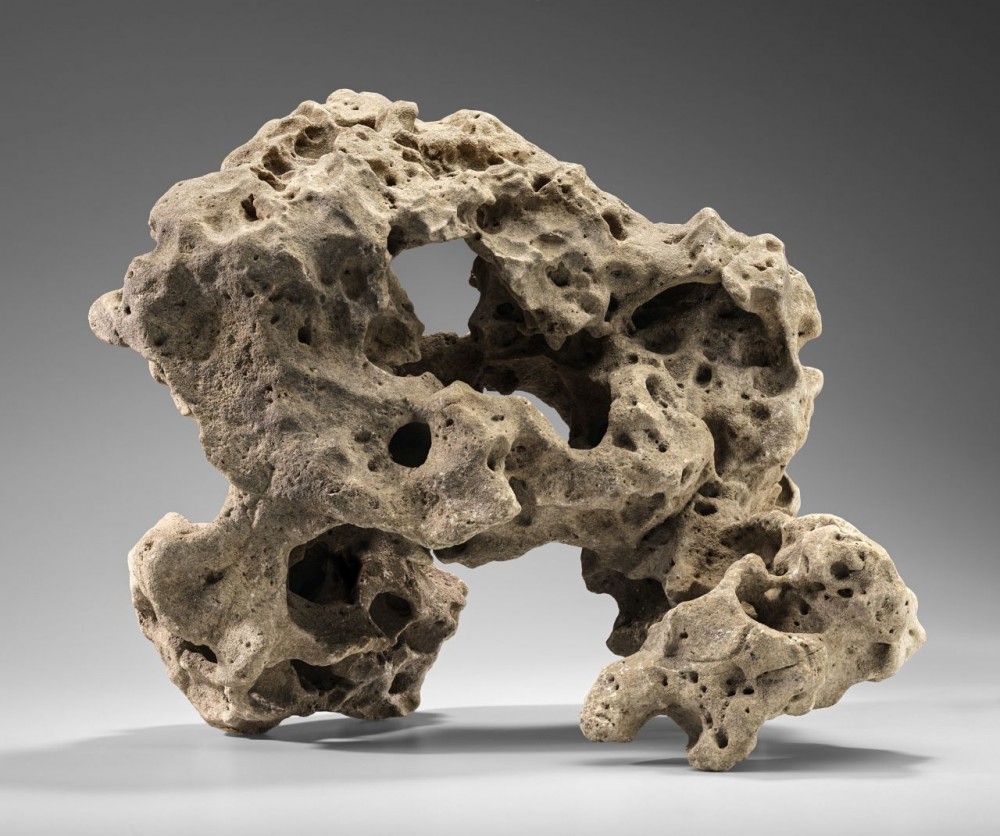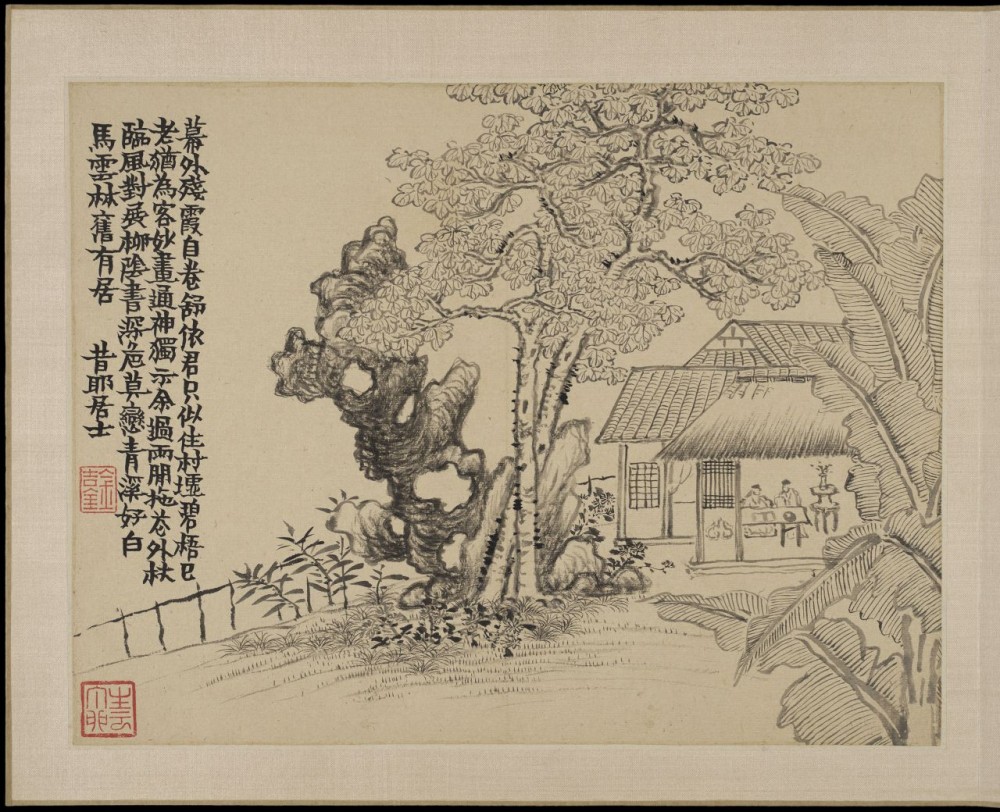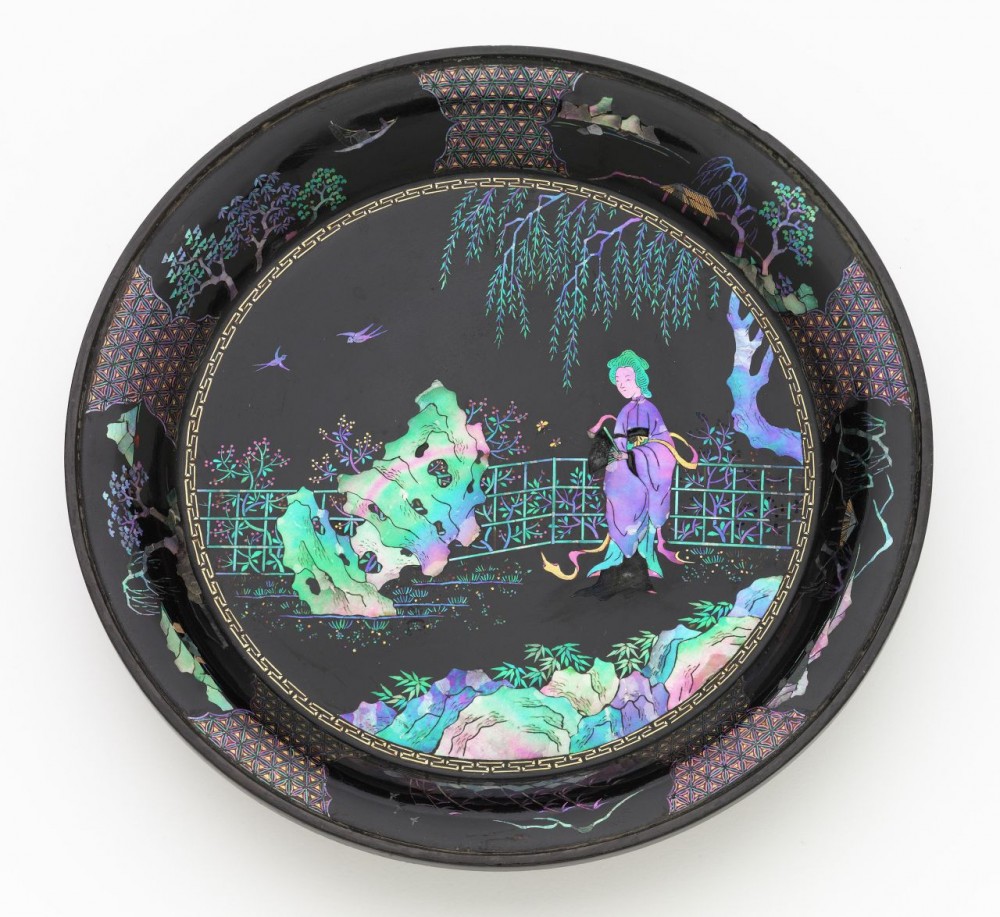
Rock
Stone
Gift of the Wan‑go H. C. Weng Collection and the Weng family, in honor of Weng Tonghe
Photograph © Museum of Fine Arts, Boston
I happened upon two rocks, their appearances were strange and awkward….
I turned to ask the two, “Would you accompany an old man?”
Although the rocks could not speak, they promised we three would be friends.
Ode to a Pair of Rocks, Bai Juyi (772–846)
Walking along a shoreline, have you ever spotted a rock that spoke to you? Its textures, colors, and shape moved you to slip it into your pocket and take it home.
蒼然兩片石,厥狀怪且醜。
……
回頭問雙石,能伴老夫否。
石雖不能言,許我為三友。
—— 白居易,《詠雙石》
漫步海岸線,你可曾被灘頭的石子吸引注意力?它的質地、顏色和形狀都可能是打動你的原因? 你將它收入囊中,以宜室家。

Elegant Ink (Landscapes after Ancient Masters)
Jin Nong (Chinese, 1687–1764)
1757
Ink on paper
Gift of the Wan‑go H. C. Weng Collection and the Weng family, in honor of Weng Tonghe
Photograph © Museum of Fine Arts, Boston
Collecting and appreciating rocks has a long history in China. During the Song dynasty (960–1249), serious art connoisseurs and critics collected and traded rocks with the same passion as fine art. Many wrote treatises on the desirable traits of rocks. Among these preferred features was an “awkward” appearance. As with their paintings and calligraphy, these intellectual critics pursued rocks that were visually expressive and more meaningful than pretty or decorative. The general terms for these prized objects are “weird” or “strange” rocks. The humble rock became, like an abstract sculpture, a medium to explore forms and textures and to express one’s inner being. In the minds of serious connoisseurs, rocks as microcosms of mountains—or even the entire universe—encouraged meditation on life itself.
Deep appreciation for the aesthetics of rocks led to new traditions: paintings of rocks and even how-to woodblock-printed manuals for painting them. Our exhibition explores both rocks and paintings of rocks in Chinese culture and how a humble, common object can be an inspiring muse.
Wan-go H.C. Weng was a Visionary Benefactor of the Museum whose donation of 390 artworks transformed the MFA’s Chinese art collection. He passed away on Dec. 9, 2020, at 102 years old. This exhibition honors his generosity and inspiring spirit in sharing Chinese art.
在中國,收藏、品鑑石頭有著悠久的歷史。宋代(960-1249)時,嚴肅的藝術鑑賞者和評論家用對待藝術品的熱情收购赏石,許多人還將佳石的特點總結成文。而這些文人評論家在繪畫與書法中,也更著意追求石頭的視覺表現力和豐富意藴,更甚过其外觀的漂亮與裝飾性。賞玩石頭的常用術語是「怪石」或者「奇石」。一块沉靜內斂的石頭,就像一尊抽象的雕塑,成為傳達形式和質地的媒介,也一併承載了人的內在精神。在這些嚴肅的品評家心中,石頭是微觀的山巒,甚或整個寰宇,觀之可體味生命、澄懷內省。
賞石美學的深入發展開闢了新的藝術傳統:石圖、和畫石教学的木版刻印畫譜。此次展覽希望探討中國文化中的石頭和畫石的藝術作品,同時也關注這一平凡之物如何化身為審美的靈感。

Lacquer with inlaid mother-of-pearl dish
Chinese, Qing dynasty, 18th century
Lacquer over wood with mother-of-pearl
William Sturgis Bigelow Collection
Photograph © Museum of Fine Arts, Boston
Generously supported by the Tan Family Education Foundation
Additional support from the Rodger and Dawn Nordblom Fund for Chinese Paintings in Honor of Marjorie C. Nordblom, The June N. and John C. Robinson Fund for Chinese Paintings in Honor of Marjorie C. Nordblom, and the Joel Alvord and Lisa Schmid Alvord Fund

